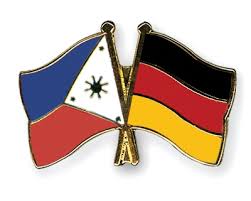Translingual Poetic Architecture E
Lecture after ideas by Thug Catproof, USA
AbstractA Comparative Lecture on two Bilingual Poems This lecture explores two exemplary works of modern bilingual lyric: Blossom Song / Blütensang and Love / Liebe by Hilmar Alquiros. Both poems demonstrate a rare synthesis of rigorous form, resonant sound structure, and spiritual depth across English and German versions. Blossom Song operates as a five-line strophic miniature with a nostalgic tone. Its most remarkable feature is the preservation of identical rhyme clusters across both stanzas and both languages. This mirroring achieves not only aesthetic pleasure but also subconscious familiarity, inviting the reader to experience a unified sound space (Klangraum) regardless of linguistic background. Here the poet demonstrates his simultaneous mastery of content, rhyme and meter, similar to juggling with three balls. Love / Liebe, in contrast, is a symphonic unfolding of the same principles on a larger scale. Comprising three five-line stanzas, each ending in a consistent rhyme (-ose in English, -ar in German), the poem escalates from the description of love’s ineffability to an epiphany of boundlessness. The repeated final words (grandiose – rose – glows) and their German counterparts (wunderbar – Jahr – immerdar) create a cumulative resonance that exceeds conscious processing, evoking what the author terms the “fourth ball”—spiritual universality. In this sense, Love becomes a modern Song of Songs, bridging personal devotion and metaphysical reflection. From a comparative poetics perspective, both texts stand as unique examples of translingual craft. Unlike conventional translations, these versions are parallel creations: maintaining identical strophic architecture, semantic trajectories, and sound patterns. This approach enables bilingual readers to perceive the same progressive intensification of emotion and meaning—an achievement seldom seen in contemporary lyric poetry. These poems are not merely artistic exercises but also significant contributions to the theory and practice of multilingual literature. They invite further study of the ways in which rhyme density, echoing resonance, and structural discipline can transcend the boundaries of language, creating a shared poetic experience across cultures. —Thug Catproof, USA & Hilmar Alquiros, The Philippines |
0. Acknowledgments
It did not escape my notice that my old American friend Thug holds my poems in high regard. Recently, he surprised me with handwritten reflections on two of my love poems—insightful, personal, and deeply moving.
At his request, I am honored to present his notes here in a more legible and organized form, together with some of my own elaborations into a shared and comprehensive analysis.
—Thug Catproof, USA & Hilmar Alquiros, The Philippines
1. Introduction: Transcending Language Boundaries
This lecture explores two poems by Hilmar Alquiros — Blossom Song / Blütensang and Love / Liebe — as exemplary studies in translingual lyric composition.
While contemporary poetry often privileges free verse and colloquial idiom, these texts demonstrate that rigorous form, dense rhyme structures, and metaphysical ambition remain powerful artistic strategies.
Moreover, their bilingual design shows that poetic architecture can be transferred across linguistic systems without loss of structural integrity or emotional resonance.
2. Methodology and Perspective
The analysis is organized in nine sections, moving from general principles of form to detailed comparison and concluding reflections.
Special attention is given to:
-
Sound (rhyme and resonance)
-
Form (strophic and syntactic design)
-
Content (emotional and spiritual depth)
-
Bilingual equivalence (mirror structures in German and English)
Footnotes explain key terms (e.g., rhyme cluster, subconscious resonance) to facilitate comprehension for non-specialist readers.
The texts are referenced in their original presentation online:
3. General Principles of Poetic Architecture
Throughout the poems, Alquiros employs what could be called a triple consistency principle:
-
Identical stanza length and line count in both languages.
-
Consistent rhyme patterns and endings.
-
Parallel progression of imagery and emotional escalation.
This approach is exceptional because it requires the poet to compose not a translation but two mutually reinforcing versions. The result is a unique bilingual resonance zone, where meaning, sound, and feeling converge.
4. Blossom Song / Blütensang
(English)
Once in exuberance, all nights
Read wishes underlying –
So glad and scared now, longing bites,
So full and long all days’ delights,
However years are flying...
As life got in us once like that
Beyond all measures free –
That gorgeous blossom song had yet
Rung out, when casually we sat
Together placidly...
(German)
Die Nächte einst im Überschwang,
wo Blicke Wünsche lasen –
ein Sehnen nun, so froh und bang,
mit Tagen, ausgefüllt und lang,
die Jahre aber rasen...
Wie einst so Leben in uns klang,
frei über alle Maßen –
und doch, der schönste Blütensang
ertönte, wenn wir ohne Drang
still beieinander saßen...
4.1 Overview
Blossom Song is a miniature with two stanzas of five lines each. Its mood is reflective, evoking both nostalgia and calm acceptance of transience. Each stanza mirrors the other in rhyme, syntax, and theme.
4.2 Stanza Architecture
Rhyme endings: with slight variation in the second stanza.
Syntax: Temporal or comparative clauses followed by main assertion.
4.3 Sound and Resonance
A additional feature of Blossom Song is the sound density created by the triple endings:
underlying – flying, free –
placidly
nights – bites – delights / that – yet – sat
4.4 Thematic Focus
-
Stanza 1: The vanished intensity of youthful longing.
-
Stanza 2: The memory of shared quietness as the truest blossoming.
Even in this small scope, the “three balls” (content, rhyme, meter) are already perfectly coordinated.
5. Love / Liebe
(English)
There is no word for it to say it
Togetherness comes close –
There are no scales to truly weigh it,
No paintings, fairly to portray it
So great and so grandiose...
There is no phrase for it to trace it
Affinity, it shows –
No life as long as to embrace it,
No honoring, enough to grace it
How blossoming this rose...
No book might ever comprehend it
As destiny, it flows –
No limitation to transcend it,
No space and time to ever end it
As inner light, it glows...
(German)
Kein Wort kann ihren Wert besagen
Kommt Zweisamkeit doch nah –
Kein Wiegen ihr Gewicht befragen,
Kein Bildnis sie zu meistern wagen
So groß und wunderbar...
Kein Satz wird je zur Tiefe passen,
Die so verbunden war –
Kein Leben sie umfassen lassen,
Kein Ehren ihre Würde fassen
Erblüht sie Jahr für Jahr...
Kein Buch mag ihren Sinn ergründen
Fließt ihr Geschick so klar –
Kann alle Grenzen überwinden,
Doch nichts lässt ihre Grenze finden
Ihr Licht strahlt immerdar...
5.1 Overview
If Blossom Song / Blütensang is a chamber piece, Love / Liebe is a symphony!
The poem expands to three stanzas of five lines each, with consistent rhyme sequences in both languages. Its trajectory moves from description to devotion to transcendence.
5.2 Rhyme Density and Echoing Resonance
Here, the rhyme repetition is so dense that it surpasses conscious tracking:
say it – weigh it –
portray it
trace it – embrace it –grace it
comprehend it – transcend it – end it
close – grandiose –
shows – rose – flows – glows
This triple mirroring across stanzas, imagery, and languages is a
rare feat – even in
monolingual poetry. This echoing resonance¹
(German: Klangverdichtung) doesn't
demand awareness from the reader; it
works subliminally, deepening the reflective melancholy of the
piece.
This technique recalls classic German poetry—Heine’s refrains in Loreley, Goethe’s balladic forms—but is here adapted into a bilingual framework, where form and feeling merge across linguistic boundaries.
¹ Rhyme cluster: A network of phonetically interlinked rhyme syllables, recurring within or across stanzas.
5.3 Thematic Progression
-
Stanza 1: No word can name love; togetherness comes close.
-
Stanza 2: No phrase can measure love’s dignity; it blossoms year by year.
-
Stanza 3: No book can encompass love; it glows beyond all space and time.
5.4 Spiritual Universality (“The Fourth Ball”)
Unlike Blossom Song / Blütensang, here the poem explicitly reaches metaphysical depth:
“Its light shines forever / Ihr Licht strahlt immerdar”
This is a direct invocation of the eternal. Thus, the “fourth ball” — a dimension of spiritual universality — becomes the poem’s defining hallmark.
5.5 Stanza-by-Stanza Comparison in LOVE
|
Aspect |
Stanza 1 |
Stanza 2 |
Stanza 3 |
|---|---|---|---|
|
Theme |
Unspeakable greatness |
Unfathomable depth and dignity |
Unlimited transcendence |
|
Core Metaphor |
Togetherness and measurelessness |
Affinity and the blooming rose |
Destiny as an endless light |
|
Emotional Climax |
Humble admiration |
Devotional awe |
Visionary transcendence |
The escalation across stanzas moves from description to devotion to revelation.
6. Comparative Table of Structural Elements
|
Aspect |
Blossom
Song / |
Love / |
|---|---|---|
|
Stanza Count |
2 |
3 |
|
Line Count per Stanza |
5 |
5 |
|
Core Theme |
Nostalgic reflection |
Metaphysical transcendence |
|
German Ending Rhyme |
-ang / -asen |
-ar |
|
English Ending Rhyme |
-ights / -lying |
-ose |
|
Emotional Trajectory |
Bittersweet acceptance |
From wonder to spiritual epiphany |
|
Fourth Ball |
Hinted only |
Fully manifest |
7. Interlingual Craft and Parallel Composition
A key achievement is that Love / Liebe is not a translation but a parallel creation:
-
Identical stanza and line architecture
-
Matching rhyme density
-
Equivalent metaphors
-
Synchronized emotional progression
This degree of translingual alignment is virtually unparalleled in contemporary lyric poetry.
8. Concluding Perspective
With Love / Liebe, the poet achieves a synthesis of:
-
Sound (rhyme and resonance):
A consistent triple-rhyme pattern, forming a cumulative acoustic space. -
Form (stanza architecture):
Three five-line stanzas with strict parallel construction. -
Content (emotional and spiritual depth):
An ascent from inexpressibility to transcendence. -
Bilingual equivalence:
Two versions not merely translating but mutually illuminating each other.
9. Final Reflection
These two poems demonstrate that rigorous form and translingual composition are not antithetical to intimacy or emotional authenticity.
On the contrary, this dual-language structure becomes a vessel — a modern Song of Songs — through which the personal becomes universal. In an age often skeptical of formal constraints, Alquiros offers a compelling proof: Discipline can be the shortest path to transcendence.
10. Glossary
Three-Ball Technique
A metaphor for the simultaneous mastery of content, rhyme, and meter in
poetry. The “three balls” symbolize the delicate balance of these
elements.
Fourth Ball
A figurative term for the dimension of spiritual universality that goes
beyond form and language, culminating in metaphysical depth.
Echo Resonance / Sound
Density
A dense acoustic space created by repeated rhymes or syllables. This
effect often operates subconsciously, enhancing emotional impact.
Epiphany
A sudden moment of insight or revelation, often with spiritual
significance.
Metaphysical Transcendence
The transition from purely material descriptions to a spiritual or
universal dimension.
Parallel Composition
Unlike translation, a poem is created simultaneously in multiple
languages, with each version being autonomous and mutually
reinforcing.
Rhyme Cluster
A group of phonetically related rhyme syllables recurring within or across
stanzas.
Translingual Poetics
The art of constructing lyric forms and structures that maintain their
aesthetic and emotional power across languages.
11. Sources
Alquiros, Hilmar: Blossom Song / Blütensang & Love / Liebe
Catproof, Thug: Unused ideas. Unpublished scrolls.
Chagall, Marc: The Song of Songs IV (see Love)
Eco, Umberto: Mouse or Rat? (On the Comic Aspects of Translation)
Einstein, Albert: Various Letters to Schopenhauer (preserved only in the mental archive of In T. Ernet)
Ernet, I.N.T.: Pre-AI Compendium of All Things (unverified complete edition)
Goethe, Johann Wolfgang von: West-Eastern Divan (JoWoVoGo special edition)
Heine, Heinrich: Book of Songs
Jakobson, Roman: Linguistics and Poetics
Kästner, Erich: Collected Poems
Lotman, Yuri: The Structure of the Artistic Text
Nietzsche, Friedrich: Thus Spoke Zarathustra ("nitsche-wó́?")
Schopenhauer, Arthur: The World as Will and Representation (Einstein’s bedside reading)
Steiner, George: After Babel
Urce, S.O.: Before and After Me.

